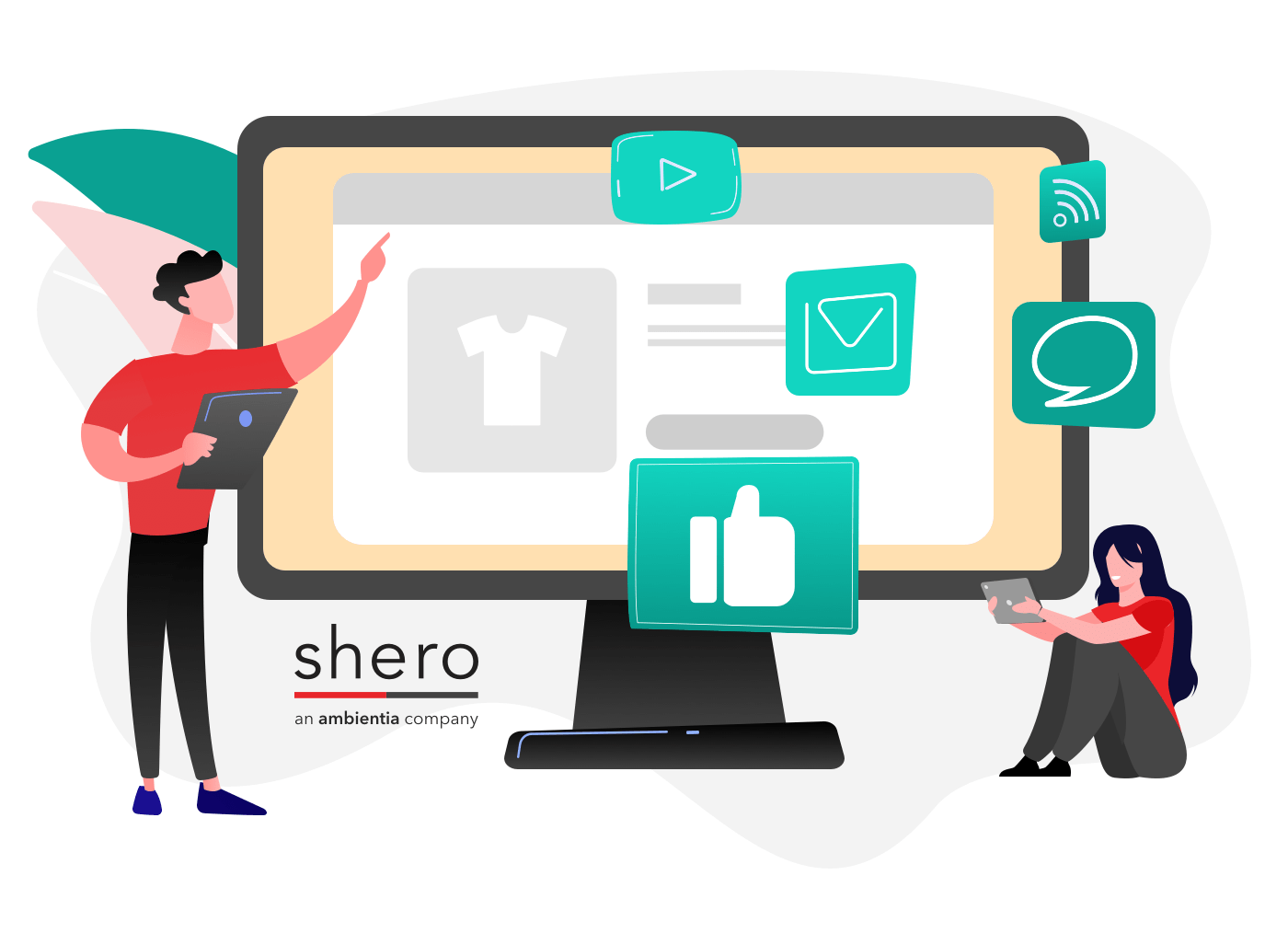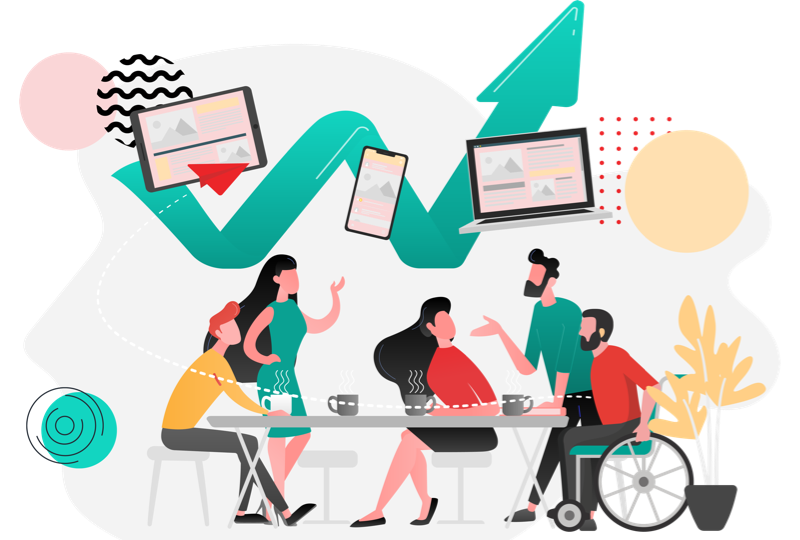Early January, Bull Street. A funky, rainy Wednesday afternoon. I was finishing up an afternoon of bookkeeping, bopping away under my headphones and filing invoices at a steady clip. And then I saw it: a chat message from The Bosses, asking me to join a meeting in the conference room.
Gulp. It was unusual for me to be called into a meeting, very unusual to be called into a meeting already underway, and completely unheard of to be called into a meeting already underway, in the conference room, with only the bosses, who usually have their one-on-ones away from the office. Something was up. As I grabbed my pen and notepad, I started running through my six months of employment with Gauge. Had I done something wrong? Was I about to be fired?!
My concern was unnecessary. What I’d forgotten in my nervousness is that Gauge doesn’t work like that. The bosses don’t sit behind closed doors counting numbers, hours, and dollars, or call surprise meetings to take employees to task. At Gauge, collaboration, support, transparency, and above all, strong relationships with people are the name of the game.
The Challenge
As it turned out, something was up; the meeting was called to spell out some big changes. Our people-first approach to client work was a big success. We had as much work as we could handle, and clients were asking for even more services. Gauge needed to expand our team so we could keep improving and innovating.
The problem was, we didn’t have the structure in place to handle that growth in a smart way. As tempting as it was to start frantically hiring more people, to do so would be like chucking fertilizer over a bunch of sprouts with no idea of what was growing and no plan to sustain the mature plants. We needed to create a trellis to guide our growth in the right direction. And the end result of that structure absolutely had to align with our people-first values.
Make The Story Great: Collaborate, put the relationship first, and build trust in every interaction to engineer an impactful outcome. – Gauge Guiding Principles
Mark and Daniel called my teammate Amy and I into the meeting to present a challenge: Our HR Department had never been given a lot of attention. It’d grown sporadically and reactively. The processes we did have took a traditional approach, with one person acting as the paperwork filer and gatekeeper for all team member information. As it stood, HR required a single person to bear the full weight of recruiting and team member development. That approach wasn’t scalable, and it certainly didn’t align with our company culture or values. Would Amy and I work together to revamp our HR Department—to demystify the details, make information accessible, create collaborative growth, and spin up streamlined, lightweight systems?
The Team
If you don’t know about Amy yet, here’s the context you need: Amy is a member of our leadership team and our financial guru, the lean, mean spreadsheet queen responsible for everything data- and finance-related at Gauge. She has a legal background, a methodical and logical perspective, and the high-level insight to get big things operating efficiently. Not to mention some crazy-good math skills.
I grew up in a restaurant and came to Gauge after managing the busy bakery two doors down. Before that, I worked in film production and with media non-profits. I know how to stay organized amid chaos, to push a team to work well together, and to create systems that hold up in a high-pressure environment, all while keeping a smile on my face and spreading good vibes. I’m also hopeless without a calculator, a total word nerd.
Together, Amy and I act as Gauge’s admin team. We’re the yin to one another’s yang, and our complementary strengths made us well-suited to take on this project. We grinned at each other over the conference table. Challenge accepted.
The Results
Amy and I pow-wowed to split up responsibilities. She took on the logistical details, like streamlining our payroll process, wrangling with benefit vendors, and organizing time off requests with the production schedule. I took on the communication and relationship-based aspects, like coordinating recruiting, revamping onboarding, and working on documentation. To navigate murkier waters, like auditing our legal compliance and creating new policies, we called in the big guns: local HR consultant Suzanne Kirk.
Since that drizzly Wednesday, Amy and I have worked hard to achieve our goals. We’ve turned our HR department from a lone-ranger position involving a lot of paperwork, information silos, decision-making bottlenecks, and tedious details, into our new People Department, a position of coordination and communication. Our People Department now has lightweight, automated processes and accessible information. We focus heavily on powering company culture and developing strong, long-lasting relationships among healthy and happy team members. Here are some key lessons I learned throughout the process.
1. Focus on who you need to hire, not what you need to hire
It’s easy to figure out what your business needs. Your managers are catching up with Basecamp messages at 10pm? You need another Project or Account Manager. Your developers are getting loopy trying to meet deadlines and you can’t keep the caffeine stocked? You need more developers.
It’s much more difficult to identify who you need. What traits are important for every single employee to demonstrate, regardless of position? What are the differentiators that set your team apart from a competitor’s—what do you brag about, or want to brag about, when talking about your culture and team? What skills or traits does that new developer or manager need to succeed, that they may not need if they work for the agency down the street? What qualities (technical or “soft”) is that department lacking? What are the common characteristics shared by every member of that department?
The old adage “People are your most important asset” turns out to be wrong. People are not your most important asset. The right people are. – Jim Collins, Good to Great: Why Some Companies Make the Leap… And Others Don’t
The ability to answer those questions and choose the right people will always come back to two clear points: knowing the core values and mission of your business, and understanding your people. We put the first point into practice at Gauge by making organizational health a priority. A big part of that is communicating our values often. We also constantly check our top priorities and goals, both individually and as a team, for alignment with our company principles.
For the second point, we foster a culture of personal interaction through 90 Day Check-Ins and plenty of team touchpoints. Our 90 Day Check-Ins are what traditional performance reviews look like when they get home and change from wingtips into flipflops. Leadership checks in with each team member every 90 days to eat lunch or grab a beer, and together they discuss that team member’s growth, successes, passions, and pain points. This one-on-one with leadership also gives the team member a prime opportunity to share ideas and give input on big-picture objectives or day-to-day issues. In between these regular check-ins, we spend time together with casual coffees, impromptu hangouts, and organized social events. We also celebrate and track individual successes. Knowing your people doesn’t just happen; like all strong relationships, it only develops as a result of acting with intentionality and making a time investment.
2. Like draws like
Be very mindful about who does your hiring, because their perspective today shapes your team for tomorrow. The people who represent your organization at career fairs, screen your applicants, and interview your candidates should be outstanding examples of the qualities important to your business. Their attitudes, values, and behaviors will consciously and subconsciously affect which candidates are attracted to and selected for your job opportunities. Let misaligned team members do your recruiting, and you’ll probably wind up with more misaligned team members.
3. First impressions last
Make your hiring process and on-boarding reflect your values and culture. Don’t tout how much you value teamwork and relationships during interviews, and then plop a new employee alone in front of tutorials for hours.
For us, achieving this took a few forms. We rewrote the Gauge Team Manual to make sure our policies were lightweight enough to work for the long haul and to make the tone reflective of our culture. We used an HR software tool (more on that below) to automate on-boarding tasks, and then used the time we gained to build more personal interaction into the on-boarding process. Now we schedule social lunches, departmental meet-and-greets, interdepartmental hangouts, and get-to-know-you one-on-ones with the whole team. Because our culture grows directly from our team members, we expose our new hires to all our people, right off the bat.
4. Train for skills, hire for weaknesses
Our team represents a wide array of skills and experience, and one thing that sets us apart from our competition is that we offer our clients full access to anyone on our team who can help them achieve their goals. Professional development has long been an area where we’ve wanted to excel, so in 2016 we’ve doubled down on our efforts to facilitate a culture of learning.
When we make the investment to really understand our team members—their passions and long-term goals, what excites them and what frustrates them—we can use that insight to help them turn skills, interests, and natural strengths into professional expertise. By sending our people to conferences, facilitating mentorships, or developing leadership skills with our Book Club, we’re simultaneously extending our service offerings and improving our staff retention. The investment proves to our team that we want them around for the long haul; that there’s room for them to grow within our organization.
When people go to work, they shouldn’t have to leave their hearts at home. – Betty Bender, former president of the Library Administration & Management Association
That investment also shows us where we need to bring in extra help. For example, this project showed us that Gauge needs someone formally trained in HR and well-versed in employment law to keep us compliant and covered. However, Amy and I weren’t interested in obtaining the level of training needed to become HR experts; our passions lay elsewhere. Rather than wasting money and causing frustration by training one of us in a field where we had the potential to be good but no passion to be great, Mark and Daniel decided to hire outside help in the form of an HR consultant and an employment lawyer.
Those advisors can give direction and help us answer the hairy questions as they arise. In between the hairy questions, Amy and I can handle the People Department aspects that do fall into our respective areas of interest. Without the need for expertise-level training in HR, Amy stays free to help clients navigate big-data challenges, and I stay free to focus on improving communication throughout our organization. It’s a win/win/win.
5. Don’t pole-vault mouse turds
That’s one of my favorite Danielisms, and it communicates three powerful points: Keep solutions proportional to problems, stay as lightweight as possible, and don’t go overboard by reinventing the wheel. For this challenge, that meant finding good tools and automating tasks as much as possible. Our People Department now relies heavily on three software tools: Workable, our applicant tracking system; BambooHR, our software to manage employee files, benefits, time off, and documentation; and Small Improvements, our tool for aggregating feedback, tracking long-term goals, celebrating wins, and managing 90 Day Check-Ins. These tools automate many of our People Department processes, like getting forms signed, compiling feedback, and onboarding new people.
Good-to-great companies think differently about the role of technology. They never use technology as the primary means of igniting a transformation. Yet, paradoxically, they are pioneers in the application of carefully selected technologies. – Jim Collins, Good to Great: Why Some Companies Make the Leap… And Others Don’t
If you’re looking for a new tool, start by thinking about what you already use. All our tools work together, and the integrations slash administrative overhead to a fraction of what it could be. Workable integrates with Bamboo, so when a candidate accepts a job offer, we can create new employee profiles and import hiring records at the push of one button. Small Improvements also integrates with Bamboo, allowing team members to access past 90 Day Check-Ins and manage goals right in Bamboo. Small Improvements also integrates with our team chat tool, Slack. When team members give each other kudos for exceptional work or celebrate wins together in Slack, the messages are automatically recorded in Small Improvements. Leadership can easily see that feedback when they’re prepping for a check-in and use it to enrich the discussion.
Overhauling this department has been a long trek and a challenge, but the results have been spectacular compared to the investment. Our new People Department truly reflects the spirit of Gauge, and now we’re prepared to handle whatever growth is needed to keep Gauge excellent in 2017 and beyond.
Does your own HR department reflect the important values and culture of your organization? Has your organization undergone a big departmental overhaul like this, or does it need one? Have any questions about our project? We’d love to hear from you in the comments.
Adi serves as the Director of Solution Architecture at Shero, where his expertise in quality assurance and platform-specific knowledge greatly contributes to the successful launch of extensive eCommerce projects.
Known for his innovation and inquisitive nature, Adi is passionate about developing software and crafting eCommerce and digital strategies for our clients. In his role, he continually engages with the latest technologies, ensuring our clients and our team are poised for success.





